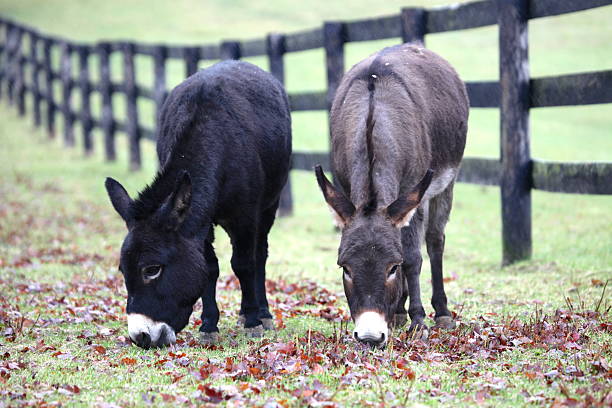Comprehensive Guide to Estimating Farm Fence Expenses
Establishing a well-built farm fence represents a significant investment that requires careful planning and budgeting. Whether you're fencing a small hobby farm or a large agricultural operation, understanding the various factors that influence farm fence costs can help you make informed decisions and avoid unexpected expenses. This comprehensive guide breaks down everything you need to know about estimating farm fence expenses, from material selection to installation considerations, helping you create a realistic budget for your agricultural fencing project.

Understanding Farm Fence Cost Factors
The cost of installing a farm fence varies significantly based on several key factors. Property size is the most obvious determinant—larger perimeters require more materials and labor. Terrain complexity also impacts costs; fencing hilly, rocky, or heavily wooded areas requires additional labor and specialized equipment. Material choice represents another major cost variable, with options ranging from basic barbed wire to premium vinyl or specialized livestock containment systems. Additionally, gate requirements, corner bracing needs, and local permit fees all contribute to the overall farm fence cost.
Selecting the Right Farm Fence Materials
Choosing appropriate fencing materials depends on your specific agricultural needs. For cattle containment, barbed wire or high-tensile wire fences offer cost-effective solutions, typically ranging from $1-5 per linear foot for materials. Horse pastures often require more substantial options like woven wire or rail fencing to prevent injuries, increasing costs to $6-15 per foot. Sheep and goat enclosures need closer wire spacing to prevent escapes, while predator protection may require electrification or specialized designs. When evaluating farm fence supplies, consider both upfront costs and long-term durability—cheaper materials often require more frequent replacement, increasing lifetime expenses.
Wire Panels for Fencing: Applications and Benefits
Wire panels have become increasingly popular farm fencing options due to their versatility and durability. These pre-fabricated panels come in various heights, wire gauges, and mesh patterns suited for different livestock. Cattle panels typically feature larger openings, while sheep and goat panels have closer wire spacing. Horse panels avoid sharp edges and have reinforced construction. The key advantages of wire panels for fencing include quick installation, excellent durability, and portability—making them ideal for temporary enclosures or rotational grazing systems. While more expensive per linear foot than traditional wire fencing, their longer lifespan and reduced maintenance requirements can offset higher initial costs.
Finding Reliable Farm Fence Suppliers
Selecting the right farm fence supplier can significantly impact both your project’s quality and cost. National agricultural supply chains offer consistency and wide product selection but may charge premium prices. Local farm fence supply stores often provide competitive pricing and region-specific expertise. Agricultural cooperatives can offer member discounts that substantially reduce costs. When evaluating suppliers, consider factors beyond just price—delivery services, installation assistance, warranty coverage, and material quality all affect the overall value. Requesting itemized quotes from multiple farm fence suppliers allows for accurate comparison while revealing any hidden costs or services included.
DIY vs. Professional Farm Fence Installation
The decision between self-installation and hiring professionals significantly impacts your fencing budget. DIY installation eliminates labor costs—typically 50-60% of total fencing expenses—but requires specialized equipment, technical knowledge, and considerable time investment. Professional installers bring expertise that ensures proper tensioning, corner bracing, and gate installation, potentially extending fence longevity. For complex projects involving challenging terrain or specialized fencing systems, professional installation often proves more cost-effective despite higher upfront expenses. When obtaining installation quotes, ensure they include all aspects of the project: material transportation, post-hole digging, stretching, anchoring, and cleanup.
Farm Fence Cost Breakdown and Comparisons
Understanding typical costs for different fencing types helps develop realistic budgets. Below is a comparison of common agricultural fencing options, associated suppliers, and their relative costs:
| Fence Type | Supplier Options | Materials Cost Range (per linear foot) | Installation Cost Range (per linear foot) | Expected Lifespan |
|---|---|---|---|---|
| Barbed Wire (5-strand) | Tractor Supply Co., Rural King | $1.00-2.50 | $2.00-4.00 | 20-30 years |
| Woven Wire | Red Brand, Stay-Tuff | $2.50-5.00 | $3.00-6.00 | 20-40 years |
| High-Tensile Electric | Gallagher, Zareba | $1.75-3.50 | $2.25-5.00 | 25-40 years |
| Cattle Panels | Behlen Country, Tarter Farm | $5.50-9.00 | $3.00-6.00 | 30+ years |
| Post & Rail (3-rail) | Centaur, Buck Fence | $12.00-20.00 | $8.00-15.00 | 20-35 years |
Prices, rates, or cost estimates mentioned in this article are based on the latest available information but may change over time. Independent research is advised before making financial decisions.
Maintenance Considerations for Farm Fencing
Long-term maintenance expenses represent an often-overlooked aspect of farm fence budgeting. Different fencing materials require varying levels of ongoing attention and repair. Traditional wood fencing may need replacement posts, rails, or paint every few years. Wire fences typically require regular tensioning and occasional wire replacement. Electric fences demand consistent vegetation management to prevent grounding issues. When calculating the true cost of farm fencing, factor in these recurring maintenance expenses alongside initial installation costs. High-quality materials and proper installation techniques can significantly reduce ongoing maintenance requirements, making premium options more economical over the fence’s lifetime despite higher initial investment.
Farm fencing represents a critical infrastructure investment that directly impacts operational efficiency, livestock security, and property value. By thoroughly understanding all cost components—materials, installation, and maintenance—and comparing various fencing systems and suppliers, farm owners can make financially sound decisions that meet both immediate needs and long-term goals. While upfront costs matter, the ultimate value lies in selecting fencing solutions that provide the right balance of functionality, durability, and budget-consciousness for your specific agricultural operation.




